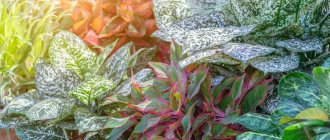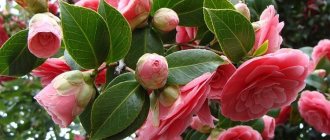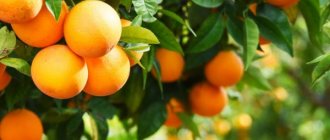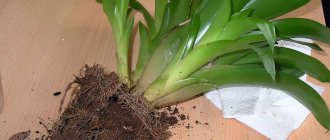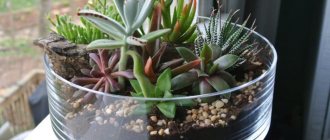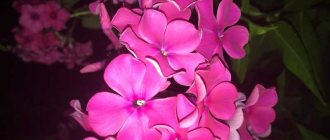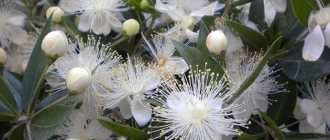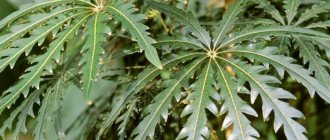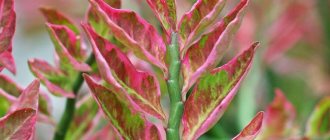Author: Parizhanka
September 28, 2022 09:16
Community : PhotoWorld
Tags: Araucaria interesting plants photo coniferous tree
5648
6
1
Araucaria is a coniferous tree from the Araucariaceae family. Appearing more than 200 million years ago, it is considered a living fossil. In its natural environment, it is distributed in South America, Africa, Crimea, and the homeland of araucaria is Norfolk Island, located in the Pacific Ocean between New Zealand and Australia.
0
Source:
See all photos in the gallery
In nature, the evergreen plant grows up to 55 m. Its rough branches are densely covered with light green needles with a pronounced resinous odor. Araucaria is a rare coniferous tree that can be grown at home. At home, it can live up to 10 years, growing by almost 20 cm per year. Indoor araucaria reaches no more than 2 m. Like all conifers, the plant does not bloom, but forms spherical fruits similar to large nuts. Be sure to pay attention to such wonderful plants as Livistona and rubber ficus.
Caring for araucaria at home. Briefly
0
Source:
Araucaria at home, unlike other conifers, grows without any problems. But you need to know the preferences of the plant: this will help to avoid possible difficulties: Temperature regime In winter - no higher than + 18°C, in summer - + 23°C. Air humidity More than 50%; Frequent spraying is required. Lighting Diffused bright, tolerates slight shading. Watering in Winter - once every 10 days; in summer - abundant, twice every 7 days. Soil Universal substrate for indoor plants, mixed with substrate for rhododendron and azalea; a mixture of 2 portions of peat soil, leaf soil, perlite and 1 part of turf soil. Feeding and fertilization Do not fertilize in winter; in spring and summer – with diluted universal fertilizer for indoor plants, once every 14 days. Replanting Young trees - every year, adults replant once every 3.5 years; does not tolerate transplantation well. Reproduction by seeds or apical cuttings. Features of cultivation There are features of growing araucaria. To grow a beautiful, healthy tree, it must be kept cool in winter. To form a symmetrical crown, the araucaria is turned to the light in different directions. In summer, the plant is taken out to the balcony or garden.
Plant species
Not all coniferous plants are suitable for growth conditions in city apartments. One of them is the domestic spruce, called Araucaria. Among the small number of types of indoor plants, the following varieties of araucaria stand out:
Variegated (Araucaria heterophylla)
Sometimes the species is called Araucaria tall (A. excelsa), Norfolk pine.
During the first years of life, awl-shaped needles grow on the tree, stretching upward.
Over time, scale-like leaves form in their place, changing the appearance of the tree.
In tubs, the plant reaches 1.5 m. There is a variety of the plant with bluish needles and dense placement of branches. Almost like a blue spruce. The branches grow horizontally, creating a neat pyramid.
In open soil under tropical conditions the tree grows up to 80 meters in height. The trunk thickness is about 2 m. The lifespan of the Araucaria varifolia tree is hundreds of years.
Narrow-leaved, Brazilian (Araucaria angustifolia)
In nature, Araucaria brasiliensis or angustifolia is found in Brazil, northern Argentina, and Paraguay.
Now the tree is listed in the Red Book as an endangered species.
Horizontal branches rise upward, forming an umbrella-shaped crown.
The shoots on the branches are collected in tassels and whorls. For this reason, Araucaria angustifolia is called the Candelabra tree.
It is decorated with thick, soft needles of a dark green hue. The plant belongs to the dioecious type. The size of the cone on female trees is 20 cm in diameter. They are formed only in the wild.
Chilean Araucaria araucana
Araucaria Chilean is a large tree with low hanging branches, hard scale-like needles growing in a spiral. Thick, resinous bark. Araucaria Chilean is considered one of the most resistant species, allowing a decrease in temperature.
The plant is popular among the alleys of parks and gardens in Europe. Large seeds are used in preparing various dishes.
Columnar, Cook (Araucaria columnaris)
The tree is widespread in the subtropics of the islands of distant New Caledonia. A pyramid tree is formed from small horizontal branches growing perpendicular to a column-like trunk.
The bristly cones reach a length of about 10 cm. Thickets of Araucaria columnar trees look like ancient stone columns.
Hanstein (Araucaria hunsteinii)
Most often used for pot growing. The regions of New Guinea are called their homeland. In natural conditions, Araucaria Hanstein is considered the tallest. The thickness of the trunk reaches 3 m. The scale-like needles are 15 cm long, and the length of the cones can be 25 cm.
Cunningham's Araucaria (Araucaria cunninghamii)
Cunningham's araucaria is otherwise called white hoop pine - it was actively used in cooperage. It is native to Eastern Australia and was first seen in Moreton Bay. Nowadays this is a popular potted tree, very often it is an araucaria bonsai.
Priming
Araucaria needs a breathable and loose substrate. A nutritious, slightly acidic (pH 5.3 – 6.2) soil is suitable for it. You can make the soil mixture yourself by taking 1 part turf soil, 2 parts perlite, peat soil and leaf soil. You can buy ready-made soil for conifers or a universal substrate for indoor plants and mix it with the substrate for azaleas and rhododendron. Be sure to add crushed pine needles, coal powder, chopped sphagnum, foam balls or brick chips to the soil mixture.
Benefits and harms
"Araucaria" is considered a plant with enormous energy.
It is like a power amplifier - it stimulates creativity, makes calm people active, and makes active people even more active.
Moreover, it does not matter where people’s energy is directed – in a positive or negative direction.
“Araucaria” simply enhances it. Indoor spruce moisturizes the air well and cleanses it of toxic substances.
It is better for those with hypertension to refrain from purchasing Araucaria, but people with low blood pressure simply need it. It is not recommended to place it in the bedroom or rest rooms.
Also on our website you can find out more about such coniferous trees as: “Araucaria Chilean”, “Cypress”, “Cypress Goldcrest Wilma”, “Siberian Cypress”.
Transfer
0
Source:
Young araucarias are replanted annually. Coniferous plants do not tolerate transplantation well, so mature araucaria is transplanted infrequently, once every 3.5 years. By this time, the roots have completely engulfed the earthen ball. Transplanting should be replaced by transshipment to help the tree survive stress. In adult plants, the top layer of soil is refreshed, but the container is not changed. The roots of araucaria are very sensitive to any influence; in order to protect them, the old soil lump on the roots is preserved. The root collar cannot be buried: the tree will first stop growing and then die. After transplantation, araucaria needs support. For several days it is placed in a shaded place and often sprayed. After 14 days they feed.
Plant information
The plant belongs to the genus of evergreen coniferous trees from the Araucariaceae family. In nature, these are real giants, long-livers with a flat top.
Found fossilized cones of Araucaria confirm an age of about 220 million years. often called Chilean pine , the sacred Pehuen tree of the Mapuche Indian people, who eat the seeds from the cones as food.
Residents of Norfolk call the tree Norfold pine . They successfully sell seeds, supporting the economy. The coat of arms and flag of the island in the Pacific Ocean adorn its branches. In Europe, the tree has become famous since 1843.
It was brought by the English scientist Bidwill for the Royal Botanical Garden. Bidwill's Araucaria (Araucaria bidwillii) is considered the first plant species to conquer Europe. Several types of araucaria intended for growing at home have now been well studied.
Trimming / Support / Garter
Pruning araucaria, like most gymnosperms, should only be done when absolutely necessary.
Removing a large branch sharply reduces the decorative value of the plant, and the regrowth of new shoots occurs slowly.
Therefore, when forming the crown, they adhere to the following rule: shoots are shortened at a young age, while the needles have not yet appeared.
With age, the lower branches of Araucarias sometimes droop excessively. You can return them to their horizontal position with timely garter. It is advisable to tie the branches while they are still quite soft, then it is easier for them to give the desired shape. Some gardeners prefer to adjust the direction of the branches with suitable support.
What does a flower look like
Araucaria Heterophylla looks like a majestic tree, impressive and exotic. It has spreading coniferous branches arranged whorled, in the form of a pyramidal crown. The trunk is straight. The bark is hard, resinous, scaly, and brown in color. The leaves are linear, lacentate, soft, tetrahedral, arranged spirally and slightly curved at the ends, and have a rich green color. The seeds are edible, round or elongated.
So, araucaria is considered a rather demanding and capricious creature, but growing it at home is quite possible. If you take care of her and follow all care recommendations, she will delight you with her beauty for a long time.
Photo gallery
flora_yli
hozyaistvo_gazeta
svetazara_kurganova
soulflowersclub
ls78.ru
room
You are in the decorative deciduous subsection, the large indoor section contains the following plants: cryptomeria, bocarnea, rapis, reo, dizygoteca, poinsettia, fatsia, pilea, nertera, radermachera, soleirolia, stromanta, cordyline.
From an ancient family
In the nature of the Northern Hemisphere, Araucaria from the family of the same name (Araucariaceae) are little known, primarily because they are heat-loving and gravitate towards a subtropical climate.
Interesting
The genus received its scientific name due to the coincidence of the range of some species of the genus with the habitats of a group of Araucan tribes.
Paleobotanical data indicate that representatives of this ancient family, once widespread in our latitudes, were unable to survive glaciation and remained only on the opposite hemisphere. The antiquity of the genus Araucaria is confirmed by the discovery of its traces in Permian deposits and its fragmented habitat. Its representatives live in South America, Australia and island territories.
Like many ancient species, Araucarias are long-lived. Some plants are estimated to be 2,000 years old.
Folk signs
It is advisable to place a pot of araucaria in the kitchen or dining room. Then she will bring holiday, satiety and prosperity to the house.
Experienced flower growers, contrary to the popular belief that conifers cannot be kept indoors, are inclined to think that the tree improves the health of family members by giving them activity.
Naturally, pine needles help purify indoor air, replenish the negative effects of electrical appliances and eliminate toxins.
Diseases
Occasionally it may be exposed to soil pests that got into the pot along with the natural soil. Therefore, it is advisable to purchase soil substrate in specialized stores.
If any problems arise with araucaria, they are associated with non-compliance with the conditions for growing an “indoor Christmas tree”.
When keeping araucaria in the summer in the garden or on an open balcony, harmful insects can settle on it . The plant especially suffers from aphids and mealybugs. These pests feed on plant sap and can reproduce in large numbers.
When damaged, araucaria quickly loses its beauty, its needles dry out and fall off. If pests are detected, the tree should be immediately treated with an insecticide to kill insects. After 7-10 days the treatment is repeated.
Problems
- Prolonged heat leads to drooping branches, yellowing of needles, slower growth, and weakening of the plant;
- Excessive dry air can lead to yellowing of the needles and their premature shedding. If in this case you do not resume spraying the plant, the araucaria may even lose the remaining branches without foliage. Insufficient watering has approximately the same effect on a “home Christmas tree”;
- Hard water with a high content of calcium salts, used for irrigation or spraying, causes a weakening of the growth of araucaria. A whitish coating may appear on its needles;
- With a lack of nutrients, young branches become thin and pale.
Watering
Araucaria should be watered evenly throughout the year. Araucaria does not tolerate overdrying of the soil substrate.
But stagnation of water in the pot must also be avoided. To do this, the flowerpot must have good drainage. For irrigation, use soft (or boiled) settled water.
The plant does not like the soil in the pot to be waterlogged. When water stagnates, its needles begin to turn yellow and fall off. Even more dangerous for it is the complete drying out of the earthen coma. This can lead to the death of the plant. Therefore, it is necessary to regularly monitor the moisture content of the soil in which the tree grows. It should be watered only when the top layer dries to a depth of at least 2 cm.
Photo
Araucaria Chilean: photo of an unusual needle for us.
We would like to tell you about what Araucaria is and what are the features of caring for this plant on the pages of our website. You will learn about the types, benefits and harms, as well as diseases and pests of one of the oldest green inhabitants of our planet.
Growing difficulties
There are not many difficulties in caring for, propagating and growing home araucaria; you just need to follow simple rules:
- cut only the lower branches without touching the top of the tree,
- do not allow high temperatures in the room - otherwise the araucaria will turn yellow, shed its needles,
- do not allow the soil to dry out and low humidity in the room,
- in the absence of regular feeding, the branches become long and weak,
- mineral fertilizers are chosen without excess calcium.
If the conditions are met, araucaria will grow quickly and delight you with bright greenery and a fresh aroma.
